
RS Aggarwal Solutions for Class 8 Maths Chapter 19 Exercise 19.1: Here, we present the RS Aggarwal Solutions for Class 8 Maths Chapter 19 Exercise 19.1 on Three Dimensional Figures. This exercise focuses on understanding and solving problems related to various three-dimensional shapes, such as cubes, cuboids, and cylinders.
It helps students grasp the concepts of volume and surface area which are important for analyzing and working with 3D objects. The solutions provided step-by-step guidance to simplify complex problems making it easier for students to master these concepts. By working through Exercise 19.1, students will enhance their spatial reasoning skills and improve their ability to calculate and visualize three-dimensional figures accurately.RS Aggarwal Solutions for Class 8 Maths Chapter 19 Exercise 19.1 Three Dimensional Figures Overview
In RS Aggarwal Solutions for Class 8 Maths Chapter 19 Exercise 19.1 students learn about three-dimensional shapes like cubes, cuboids, and cylinders. This exercise teaches how to find the volume and surface area of these shapes. Students practice using formulas to solve problems and understand the properties of each shape. By working on these exercises, they get better at visualizing and solving problems involving three-dimensional objects. This helps build a solid foundation for understanding more complex geometry topics.RS Aggarwal Solutions for Class 8 Maths Chapter 19 Exercise 19.1 PDF
Here, we have provided the RS Aggarwal Solutions for Class 8 Maths Chapter 19 Exercise 19.1 in a PDF format. By reviewing this PDF students can effectively practice and master the concepts related to three-dimensional figures, enhancing their problem-solving skills in geometry.RS Aggarwal Solutions for Class 8 Maths Chapter 19 Exercise 19.1 Three Dimensional Figures PDF
RS Aggarwal Solutions for Class 8 Maths Chapter 19 Exercise 19.1 (Ex 19A)
Below we have provided RS Aggarwal Solutions for Class 8 Maths Chapter 19 Exercise 19.1 Three Dimensional Figures -(Question 1) Write down the number of faces of each of the following figures:
(i) Cuboid = 6 faces (ii) Cube = 6 faces (iii) Triangular prism = 5 faces (2 triangular and 3 rectangular) (iv) Square pyramid = 5 faces (1 sq. faces and 4 triangular faces) (v) Tetrahedron = 4 triangular facesSolution:
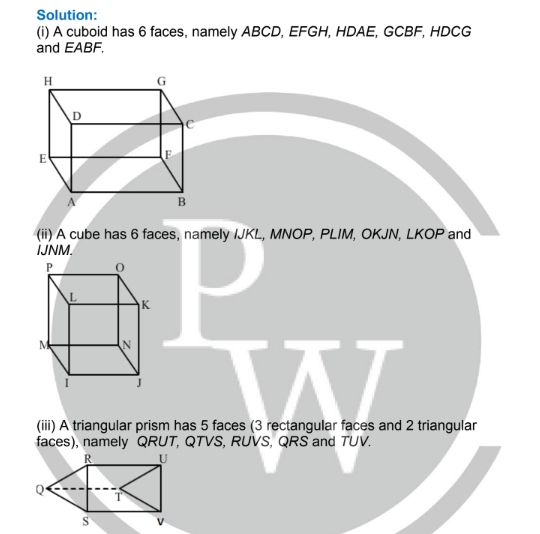
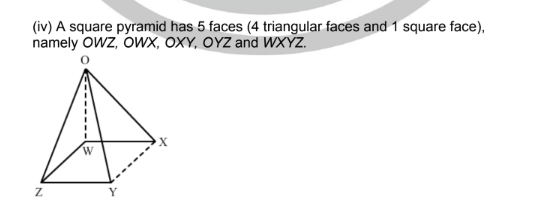

(Question 2) Write down the number of edges of each of the following figures:
(i) Tetrahedron = 6 edges (ii) Rectangular pyramid = 8 edges (iii) Cube = 12 edges (iv) Triangular prism = 9 edgesSolution:
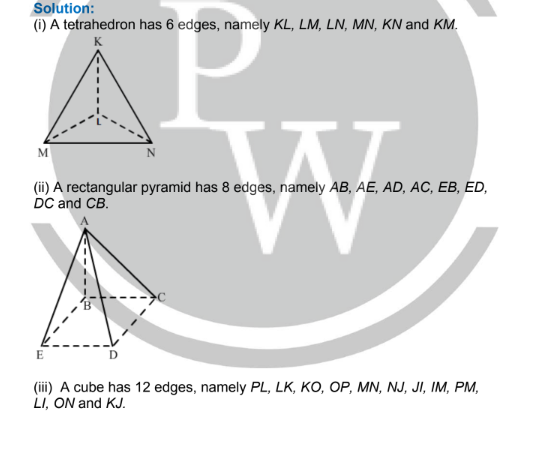
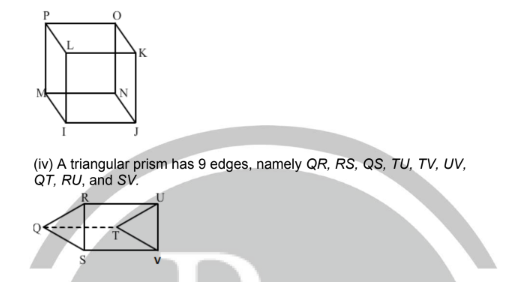
(Question 3) Write down the number of vertices of each of the following figures:
(i) Cuboid = 8 vertices (ii) Square pyramid = 5 vertices (iii) Tetrahedron = 4 vertices (iv) Triangular prism = 6 vertices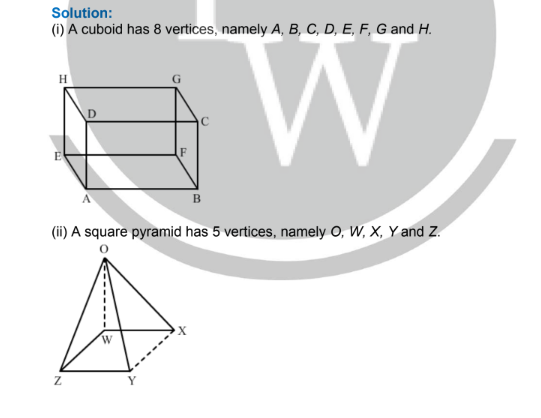
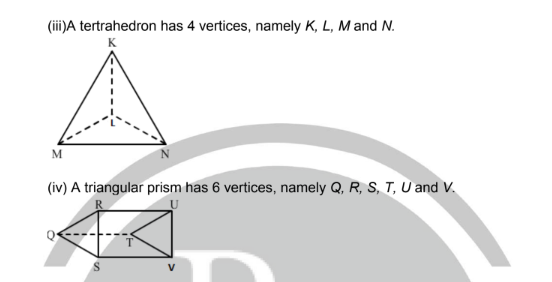
(Question 4) Fill in the blanks:
Solution:
(i) A cube has 8 vertices, 12 edges and 6 . (ii) The point at which three faces of a figure meet is known as its vertex . (iii) A cuboid is also known as a rectangular cube . (iv) A triangular pyramid is called a tetrahedron .Benefits of RS Aggarwal Solutions for Class 8 Maths Chapter 19 Exercise 19.1
RS Aggarwal Solutions for Class 8 Maths Chapter 19 Exercise 19.1 FAQs
What are three-dimensional shapes?
What is the difference between a cube and a rectangular prism?
How do you find the volume of a three-dimensional shape?
What is the surface area of a three-dimensional shape?









